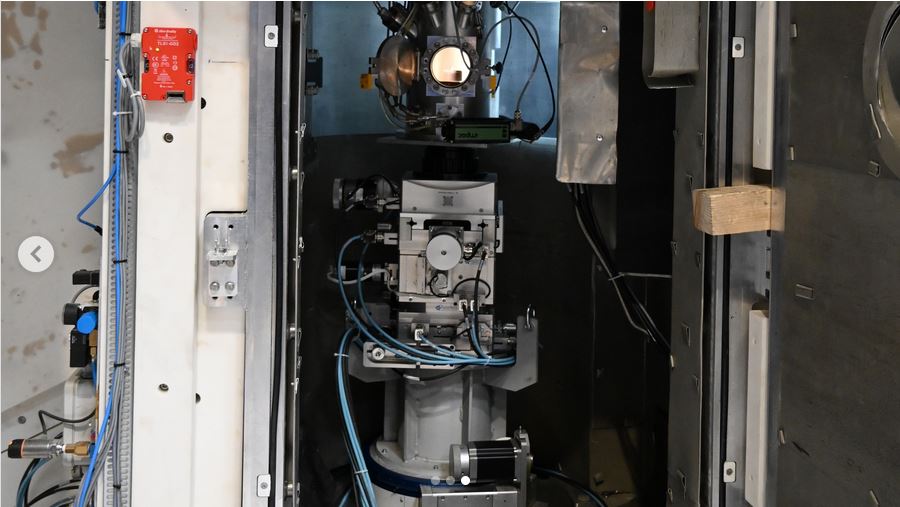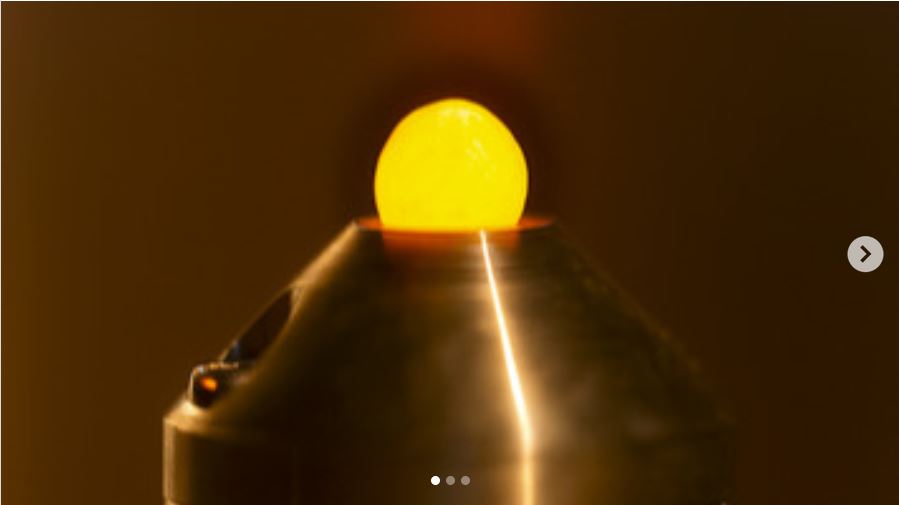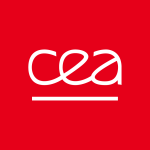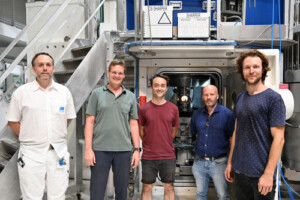Last week, the very first team of users has been performing experiments on the SHARPER instrument at the ILL.
The SHARPER spectrometer – a brand-new 𝘩𝘪𝘨𝘩-𝘧𝘭𝘶𝘹 𝘵𝘪𝘮𝘦-𝘰𝘧-𝘧𝘭𝘪𝘨𝘩𝘵 𝘴𝘱𝘦𝘤𝘵𝘳𝘰𝘮𝘦𝘵𝘦𝘳 – welcomed its first users. Upgraded and relocated successor to the SHARP spectrometer, SHARPER now sits at the end of the ILL’s most complex neutron guide ever built: H15.
SHARPER came online during the second 2024 reactor cycle (which run for 16 May to 9 June). SHARPER was built and is operated at the ILL by the Léon Brillouin Laboratory (Saclay, France) as a CRG (Collaborating Research Group) instrument.

The sample holder of the SHARPER Spectrometer
The first measurements user measurements on SHARPER have been performed with PhD Student Phillip Eckstein, working on a joint PhD project between the ILL and the Institute of Frontier Materials of the German Aerospace Center (DLR). They concerned the study atomic dynamics in a glass-forming viscous liquid over a broad momentum transfer to unveil the relation between structural relaxation and diffusive transport of mass, and to test the validity of established Maxwell and Stokes-Einstein relations.
One of the novelties in this experiment was the new, ADL-designed, aerodynamic levitator for neutron scattering. This plug-and-play set-up had already proven its capabilities in diffraction (structure) experiments on D20 and XtremeD. The new system enabled containerless measurements on structure and dynamics on molten metals, oxides, and ceramics.

The new aerodynamic levitator, enabling containerless neutron measurements on molten metals, oxides, and ceramics. Image of the levitated sample.
Photo: © Phillip Eckstein (ILL).
Hats off to the CRG team from the Léon Brillouin Laboratory (CEA IRAMIS) along with Quentin Berrod (SyMMES) for making this possible, and to pioneers like Andreas Meyer who recalls the ‘more than 100 nights’ spend in IN6 since nearly 30 year ago, as well as the back-of-the-envelope drawings done with Helmut Schober on how to increase the flux by a factor of 10 – now a reality.
See also :
- Update on SHARPER (22/07/2024)
- From SHARP to SHARPER (26/04/2024)


